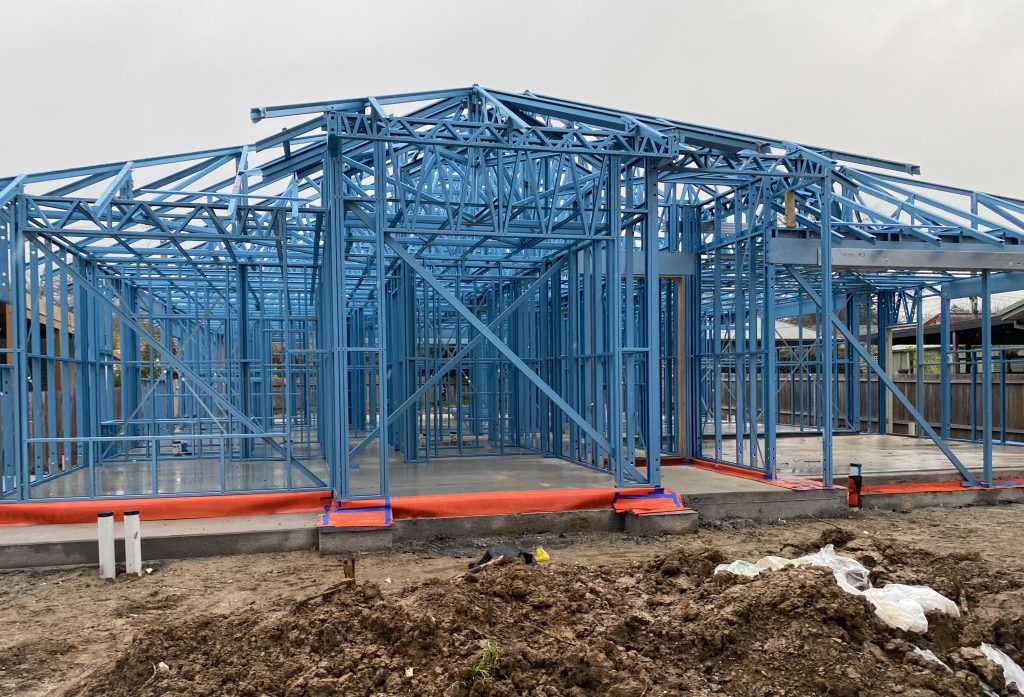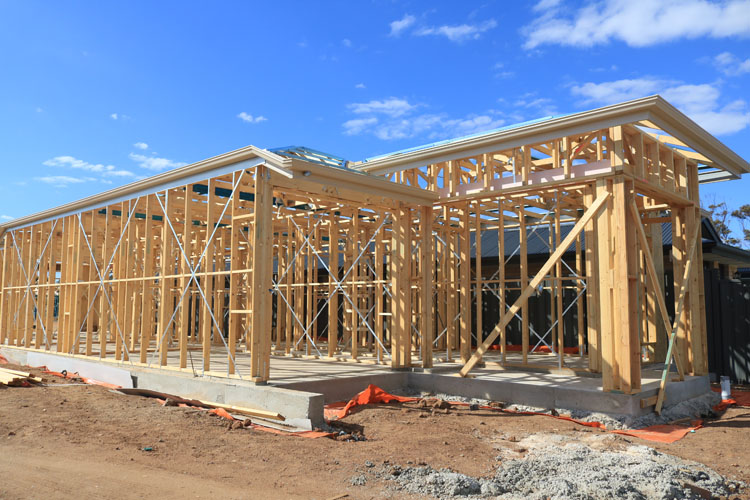What is Lightweight framing:
Lightweight framing is a construction technique that utilizes lightweight materials, such as timber or metal studs which are lighter than traditional construction materials like bricks and concrete to create a structural framework for a building. Lightweight framed construction is the most common construction system used in Australia.


How does lightweight framing work:
Lightweight framing is a construction method where a building’s structural framework is built using materials like timber or light gauge steel, which are both strong and light. The process involves assembling closely spaced vertical studs, horizontal joists, and sloping rafters, which are then fastened together using specialized fasteners, such as screws or self-tapping rivets to form the skeleton of the building. This frame holds up exterior wall claddings, internal linings, flooring, roofing, windows and doors.
Studs: vertical framing members that form the primary structural support for walls in buildings.
Joists: horizontal framing members that support the floors and ceilings of buildings.
Rafters: Rafters are sloped framing members that support the roof covering of a building.
Advantages of Lightweight framing:
- Lightweight and easy to handle: Lightweight framing is not heavy, making it simpler for workers to move and work with, which can help speed up building projects.
- Resistant to pests and decay: Steel and termite proofed timber frames doesn’t attract bugs like termites and won’t rot over time, which helps keep buildings in good shape for longer.
- Faster construction process: Building with lightweight steel frames can be done more quickly than with traditional wood framing, allowing for faster completion of structures.
- Recyclable and sustainable: This type of framing can be melted down and made into new products, which is good for the planet because it means less waste.
- Reduces foundation load: Since it’s not as heavy as other building materials, it puts less stress on the building’s base, which can mean a lighter and less costly foundation is needed.
Disadvantages of Lightweight framing:
- Less noise insulation than wood: Lightweight frames don’t block sound as well as wood does, which means you might hear more noise from outside or other rooms.
- Can corrode over time: If the metal isn’t treated properly, it can rust or wear away, especially in places where there’s a lot of moisture or salt in the air.
- Not as strong for heavy loads: These frames might not hold up as well under very heavy weights, like big furniture or multiple floors, compared to other building materials.
- Difficult to modify once installed: Once you put up a metal frame, it’s harder to change things around, like adding a door or window, because the metal is tough to cut through.
- Conducts heat, poor insulator: Lightweight framing have poorer thermal insulation properties compared to heavier materials. It fails to effectively retain warmth during winter or keep cool air in during summer, which can lead to higher energy bills.
Common structures where lightweight framing is used are:
- Residential Construction
- Commercial Buildings
- Industrial Facilities
- Institutional Buildings
- Modular Construction
- Renovation and Retrofitting
Sources:

Leave a Reply